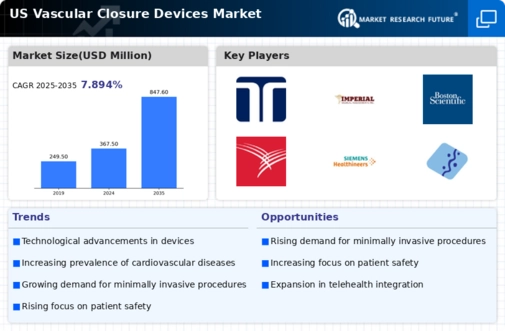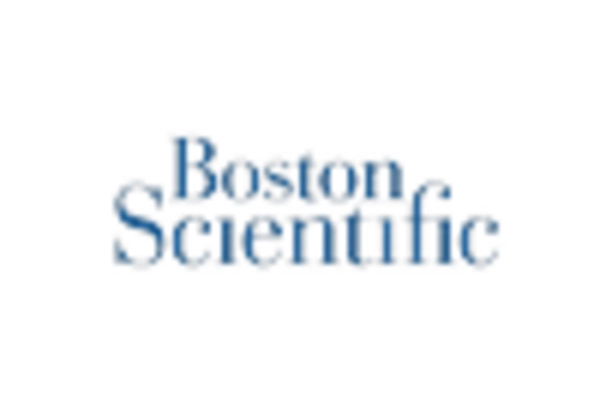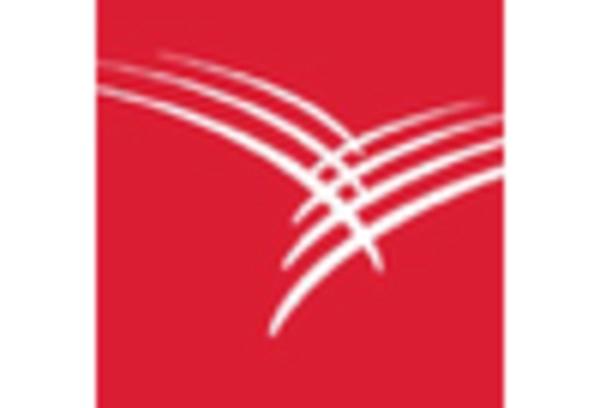Technological Innovations in Device Design
Technological advancements in the design and functionality of vascular closure devices are significantly influencing the market. Innovations such as bioresorbable materials, advanced suturing techniques, and improved delivery systems are enhancing the efficacy and safety of these devices. The introduction of devices that minimize the risk of complications, such as hematomas and infections, is particularly appealing to healthcare providers. As of 2025, The market is witnessing a shift towards devices that offer faster recovery times and improved patient comfort. The integration of digital technologies, such as real-time monitoring and data analytics, further supports the growth of this market segment. This trend indicates a robust future for the vascular closure-devices market, as manufacturers continue to invest in research and development to meet evolving clinical needs.
Growing Preference for Outpatient Procedures
The shift towards outpatient procedures is reshaping the landscape of the vascular closure-devices market. As healthcare systems aim to reduce costs and improve patient throughput, many vascular interventions are now performed in outpatient settings. This trend is driven by advancements in minimally invasive techniques, which allow for quicker recovery and reduced hospital stays. The market is likely to benefit from this shift, as effective closure solutions are essential for ensuring patient safety and satisfaction in outpatient settings. Reports suggest that outpatient procedures are expected to grow by approximately 20% annually, further propelling the demand for reliable closure devices. This evolving preference indicates a promising trajectory for the vascular closure-devices market, as healthcare providers adapt to changing patient care models.
Increased Focus on Patient Safety and Outcomes
The emphasis on patient safety and improved clinical outcomes is a critical driver for the vascular closure-devices market. Healthcare providers are increasingly prioritizing devices that not only facilitate effective closure but also minimize complications and enhance recovery. Regulatory bodies are also advocating for stringent safety standards, which further influences device development. The market is responding to this demand by introducing products that demonstrate superior performance in clinical settings. As hospitals and clinics strive to meet quality benchmarks, the adoption of advanced closure devices is likely to rise. This focus on safety and outcomes is expected to contribute to a market growth rate of around 15% over the next few years, reflecting the industry's commitment to enhancing patient care.
Rising Investment in Healthcare Infrastructure
The ongoing investment in healthcare infrastructure across the US is a significant driver for the vascular closure-devices market. As hospitals and surgical centers expand their capabilities, the demand for advanced medical devices, including vascular closure solutions, is likely to increase. Government initiatives aimed at improving healthcare access and quality are also contributing to this trend. The market stands to benefit from these investments, as healthcare facilities seek to equip themselves with the latest technologies to provide optimal patient care. With an estimated $200 billion allocated for healthcare infrastructure improvements in the coming years, the market for vascular closure devices is poised for substantial growth. This influx of funding may lead to enhanced research and development efforts, further propelling innovation within the vascular closure-devices market.
Increasing Prevalence of Cardiovascular Diseases
The rising incidence of cardiovascular diseases in the US is a primary driver for the vascular closure-devices market. As the population ages, the prevalence of conditions such as coronary artery disease and peripheral artery disease increases, necessitating more interventional procedures. According to the American Heart Association, cardiovascular diseases account for approximately 1 in every 4 deaths in the US. This alarming statistic underscores the need for effective vascular closure solutions post-procedure. The market is expected to grow as healthcare providers seek to enhance patient outcomes and reduce complications associated with traditional closure methods. With an estimated market value projected to reach $1.5 billion by 2026, the demand for innovative closure devices is likely to surge, driven by the need for efficient and safe vascular interventions.

















Leave a Comment